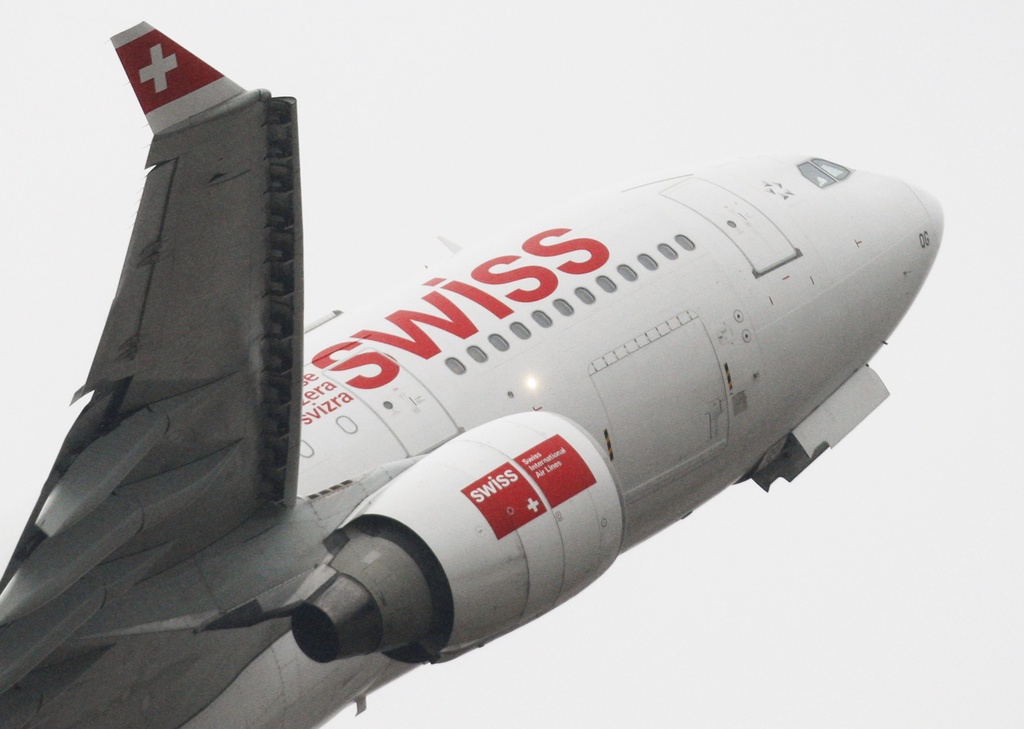Swiss raises bar with fleet and jobs expansion

Amid signs of a gradual recovery for the airline industry, Swiss International Air Lines is splashing out SFr1 billion ($1.02 billion) on nine new long haul aircraft.
The additions to the fleet from 2012 will create 2,000 new jobs in Switzerland, around a third of them directly at Swiss. The airline that was forced to shrink shortly after its creation in 2002 is now growing again. The new aircraft will eventually boost the fleet to 90.
The airline industry as a whole is now forecast to enjoy a more profitable year in 2010 than initially expected, as the global economy recovers from recession. The industry’s trade body, the International Air Transport association (Iata), last week tripled its estimate for industry profits to $8.9 billion (SFr8.76 billion).
The downside is that much of these profits are expected to disappear next year as the global economy slows again. In addition, the lion’s share of profits are expected to be taken by Asian airlines, with European counterparts on the whole forecast to register losses.
But Swiss bucked the European trend in the first six months of this year with a SFr60 million profit despite losing SFr30 million from flight disruption caused by an Icelandic volcano.
Demand increasing
Zurich Cantonal Bank aviation analyst Michael Winkler believes Swiss’s recent good cheer could prove to be sustainable in the long run.
“The aviation industry is very cyclical, but it is a very profitable market when the economy is booming,” he told swissinfo.ch. “It should grow by around five per cent per annum in the long term.”
Thanks to its 2005 integration into Germany’s Lufthansa Group, Swiss has enjoyed the kind of stability it had lacked since it was formed from the ashes of the former national carrier Swissair. The backing of the larger airline, which came with cost savings in areas such as maintenance and fuel, has given Swiss a platform from which to prosper, according many observers.
Swiss said its fleet expansion is driven by the prospect of sustainable demand for more flights in the future.
“Swiss always strives to adapt to market conditions. There is a growing demand, in both the business community and the general population, and Swiss is steadily expanding its offer to keep up with future demand,” an airline spokeswoman told swissinfo.ch.
Turbulence ahead
Winkler believes the strategy of adding nine new long haul aircraft to its fleet, with the promise of at least two as yet unnamed destinations, is the right path for Swiss to take.
“Swiss is geared towards the business traveler and these are people who generally want to travel direct to their destination,” he said. “It is a natural strategy to offer more flights when the economy gets going again.”
“Long haul routes, particularly to Asia, are picking up again and are more profitable than they were two or three years ago,” he added.
But the growth path for Swiss is also expected to meet some turbulence. Swiss pilots have long resented being paid less than their Lufthansa counterparts, and negotiations are underway with unions to hammer out a new collective pay and conditions agreement to be implemented next year.
Pay dispute
Aviation expert Sepp Moser also believes that the aviation industry has weathered the worst of the storm and recognizes that Swiss is performing well at the moment.
However, he is concerned for the long term attractiveness of Swiss to its mother company, Lufthansa, if operational costs start to rise.
“Swiss is expected to operate on behalf of the Lufthansa group,” he told swissinfo.ch. “As long as Swiss has the cost advantage of being operationally cheaper to run, it has the right to exist. If salaries become too expensive then it would kill the business model.”
There are also problems surrounding Swiss’s main base, Zurich airport. A long standing night flight restriction over southern Germany, and subsequent complaints from Zurich locals about the additional noise of redirected aircraft, has clipped capacity at the airport.
The European Court of Justice earlier this month rejected an appeal by Swiss to overturn the German flight restrictions.
Moser has long doubted the viability of Zurich as a hub airport, particularly when Frankfurt and Munich airports get their anticipated new runways. Winkler, on the other hand, does not agree that Lufthansa would abandon its multi-hub strategy quite so easily.
In addition, Winkler is convinced that the new aircraft will present long term savings with better fuel efficiency and lower maintenance costs.
Born out of the wreckage of the bankrupt Swissair and regional carrier Crossair, Swiss International Air Lines started flying in 2002.
Having been forced to cut its fleet (to 74) and staff by a third a year later, the struggling Swiss was saved by Lufthansa in 2005.
But Swiss now appears to be on solid ground with half year profits of SFr61 million despite the disruption caused by an Icelandic volcano earlier in the year. The airline said it was on target to beat its annual profit of SFr146 million achieved in 2009.
Swiss flew some 6.64 million passengers in the first six months of 2010 – up 2% from 2009. Seat load factor of these flights increased 4.2% to 80.1%.
Swiss currently has a fleet of 79 aircraft that will be boosted to 81 by the end of this year.
From 2012, the airline will then receive five Airbus 330-300s, two Airbus 221s and two Airbus 320s.

In compliance with the JTI standards
More: SWI swissinfo.ch certified by the Journalism Trust Initiative












You can find an overview of ongoing debates with our journalists here . Please join us!
If you want to start a conversation about a topic raised in this article or want to report factual errors, email us at english@swissinfo.ch.